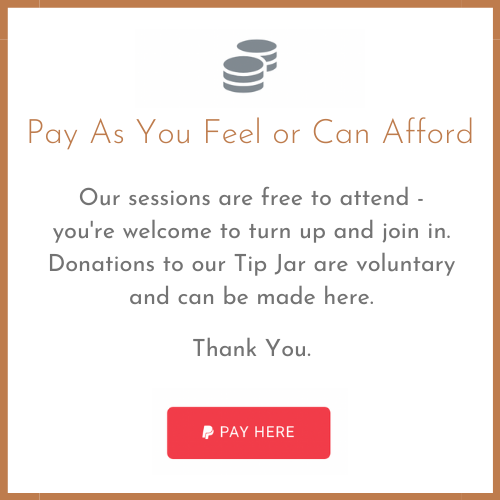Click here for our regular online tunes sessions.
Click here for our regular online tunes sessions.
Northumbrian Session
Click here to watch the recording of our session with Alistair Anderson in October 2021.
Join by clicking on this link when the session is live OR use this meeting ID: 876 6436 9517 (the passcode is 2005)
There are many great tunes that form part of our musical tradition here in the North East of England, and we are only too happy to play our part in keeping them alive! One of the ways we are doing this is through our monthly Northumbrian Session, which takes place on the 3rd Sunday of every month, 6pm – 7.30pm (UK time), on Zoom. As with our other online sessions, this is an open-access event – anyone is welcome to turn up and join in, no booking required.
We’ll be playing some of the best Northumbrian tunes (see below to download the tunebook), and will add in the occasional harmony to keep it interesting.
These sessions are open to players of all instruments, not just Northumbrian pipers.
Tunes will be lead on fiddle & guitar, but we will be playing in a tuning compatible with the Northumbrian Pipes. We sometimes have a guest piper in the studio leading with us. All of the tunes are traditionally played in the keys of G or D, but we will be playing them in the keys of F or C instead, and we’ll have our instruments tuned a little sharp. There’s more information below to help you tune up for the session.
Schedule
2025/26 schedule (all 6pm-7.30pm):
- Sunday 15th June
- Sunday 20th July
- Sunday 17th August
- Sunday 21st September
- Sunday 26th October (4th Sunday)
- Sunday 16th November
- Sunday 21st December
- Sunday 18th January
- Sunday 15th February
- Sunday 22nd March (4th Sunday)
- Sunday 12th April (2nd Sunday)
- Sunday 17th May
Tunebook & What to Expect at the Session
We’ve put together a tunebook for the session, which we will refresh every summer. All of the tunes are either Northumbrian in origin, or have been adopted into the Northumbrian repertoire. We’ve included many of the classics, alongside some of the lesser known tunes that we hope you will enjoy playing. All of the tunes can be found in the Northumbrian Pipers repertoire.
The tunebook is divided into three sections – tunes in G, D and Am – and we will play some tunes/sets from each section in the session. The first few tunes in each key (shown in bold/italics in the table of contents) are ‘core’ tunes for 2024/25 and we will play these in every session this year, alongside a selection of other tunes from the book.
We’ll lead all of the tunes. If we do not have a guest piper in the studio, we may invite any Northumbrian pipers in the zoom call to lead tunes as well. This is optional, there is no obligation to lead a tune! Unless they are leading a tune, all participants will be ‘muted’, which means that you will only hear the tune leaders (fiddle & guitar, or Northumbrian pipes) and your own instrument, so it will feel a bit like playing in a mixed instrument trio/duo. You won’t hear other participants, and nobody will hear you. Scroll down to see a video clip from a previous Northumbrian session, which will give you an idea of what to expect.
You can download the sheet music here (see below for guidance about which tunebook to use):
We’ve been running online tune sessions twice a week since April 2020, alongside other online rehearsals, and we’ve invested significant time and resource into getting the best possible sound quality through Zoom. Our tune sessions are relaxed and open to all.
Tuning your instrument to join in
The note G on the Northumbrian Pipes is typically pitched 20 cents sharp of F. You will therefore need to tune your instrument accordingly. Please aim to tune up in advance of the session, using the guidance below.
You can also use the video to the left to test your tuning. The audio was recorded straight from Zoom, so this is a good indicator of what you will be playing along to in the session (though we don’t usually put the sheet music on the screen, so you’ll need to download your own copy).
Pipers: You can use the guide pitch on the right to tune your drones in advance of the session, and use the sheet music in it’s original key.
G drone (F + 20 cents)
Fiddle players: You have a choice! Either of the following will work.
- Tune all of your strings down almost a whole tone (so that your G becomes an F, and so on) and follow the sheet music in G. Your fiddle will sound a little different, but it means you can play the tunes just as you normally do. Use the sheet music in the original key (G or D).
- Tune all of your strings just a little sharp (20 cents) and play the tunes in the key of F (one flat) instead of G (one sharp), or C instead of D. Use the transposed version of the sheet music.
Use the guide pitches at the bottom this page to tune your fiddle.
Guitar players: Tune all of your strings 20 cents sharp (use the guide pitches below). This will make your F (first string, first fret) the same pitch as the “G drone” in the box above. Follow the transposed sheet music/chords. For tunes in the key of F, and use a capo at the 3rd fret and play D shapes, or a capo at the 5th fret and play C shapes. Play along to Peacock’s March in the video above, using the sheet music in F to try this out. For tunes in the key of C, use C shapes with no capo. For tune sets that involve both keys (F and C), use a capo at the 5th fret and use C shapes for tunes in F and G shapes for tunes in C.
Whistle players: If you have an F whistle, then you can use that to play the sheet music that has been transposed into F (and similarly a C whistle for the tunes transposed into C) . Alternatively, you can play the tunes on a C whistle using the fingering you would on a D whistle (so that a G is pitched at F, and so on) and use the sheet music in the original key. You can experiment using the video above.
Other tuneable instruments: Tune your instrument 20 cents sharp and follow the transposed version of the sheet music. You can use the guide pitches below.
Other non-tuneable instruments: Follow the transposed version of the sheet music. You may find your instrument sounds a little flat against the accompaniment, but over Zoom it may not be too uncomfortable. You can give it a try using the video above.
Guide pitches if you are tuning 20 cents sharp
(If you use this tuning, you can follow the sheet music in F)
E
A
D
G
Guide pitches for fiddles if you are re-tuning down to pipes pitch
(If you use this tuning, you can follow the sheet music in G)
E becomes just sharp of D
A becomes just sharp of G
D becomes just sharp of E
G becomes just sharp of F

